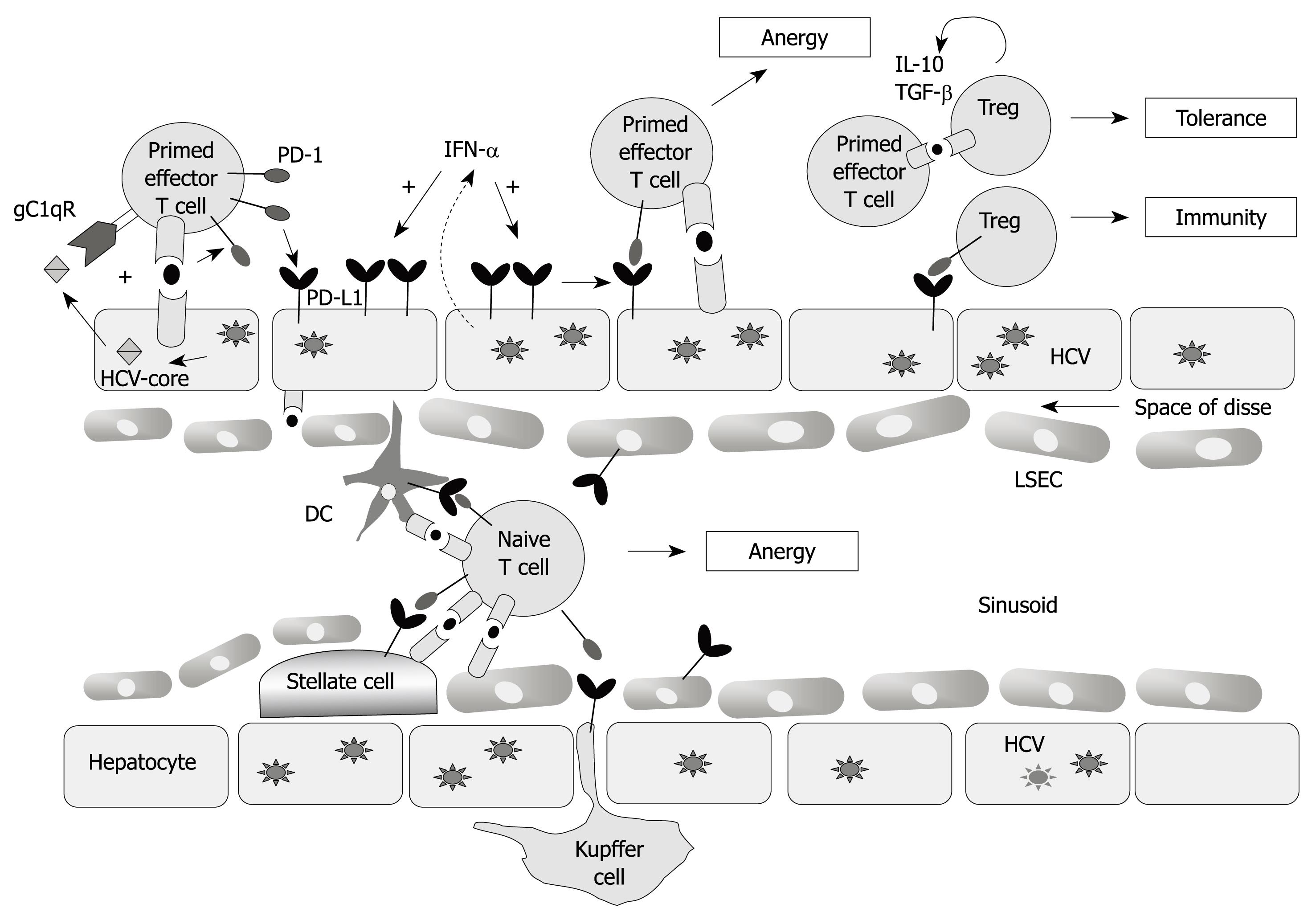Copyright
©2009 The WJG Press and Baishideng.
World J Gastroenterol. Nov 7, 2009; 15(41): 5129-5140
Published online Nov 7, 2009. doi: 10.3748/wjg.15.5129
Published online Nov 7, 2009. doi: 10.3748/wjg.15.5129
Figure 2 Liver microenvironment.
Circulating HCV-specific CD8+ T cells migrating through the hepatic sinusoid interact with resident liver cells [Kupffer cells, dendritic cells (DC), hepatocytes, liver sinusoidal endothelial cells (LSECs), stellate cells] that could act as antigen presenting cells. These cells up-regulate PD-L1 expression during persistent HCV infection and interact with the PD-1 molecule expressed on HCV-specific CD8+ T cells. This interaction leads to T cell anergy. PD-1 up-regulation is produced by TCR stimulation in addition to the interaction between HCV-core protein and the complement receptor (gC1qR). In this micro-environment the regulatory T cells (Treg) also participate, whose activity is also regulated by the PD-1/PD-L1 pathway.
- Citation: Larrubia JR, Benito-Martínez S, Miquel J, Calvino M, Sanz-de-Villalobos E, Parra-Cid T. Costimulatory molecule programmed death-1 in the cytotoxic response during chronic hepatitis C. World J Gastroenterol 2009; 15(41): 5129-5140
- URL: https://www.wjgnet.com/1007-9327/full/v15/i41/5129.htm
- DOI: https://dx.doi.org/10.3748/wjg.15.5129









